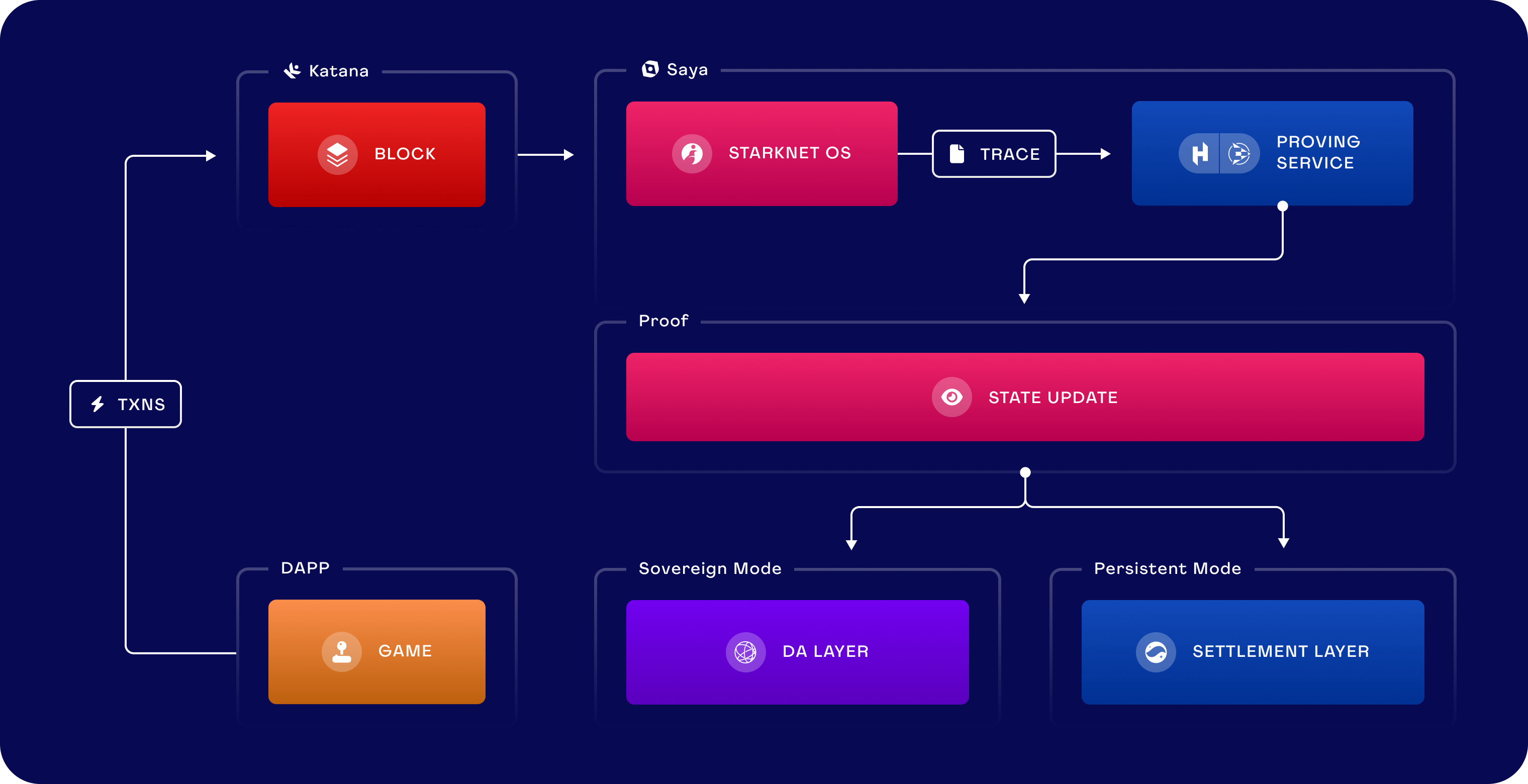![]()
Saya is the settlement orchestrator for Katana, it is responsible for fetching the blocks from Katana and prove them. Once the block execution is proven, Saya can settle the block either by verifying it on a settlement layer and update the state of the core contract, or by posting the data to a data availability layer.
Architecture

The core steps of Saya are:
- Fetch the blocks from Katana
- For each block,
StarknetOStrace is generated. StarknetOStrace is sent to Herodotus proving service to get the proof.- The proof is then sent to the settlement layer for verification and the state of the core contract is updated and/or the compressed state diff is sent to the data availability layer.
Operating Modes
Currently, Saya can operate in two modes:
-
Persistent mode: Saya will fetch the blocks from Katana and will verify the proof and update the state of the core contract on the settlement layer.
-
Sovereign mode: Saya will fetch the blocks from Katana and will post the proof and associated compressed state diff to a data availability layer.
Herodotus
Saya relies on Herodotus to prove blocks. This service can handle trace generation and proof generation, by proxying the proof generations to SHARP.
You will need to create an account on the Herodotus portal and provide the account API key in the ATLANTIC_KEY environment variable.
Installation
The source code of Saya is available on GitHub at dojoengine/saya.
Saya is available as a binary for linux and macOS (both amd64 and arm64).
You can also run Saya from the docker image.